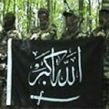
Center of Rebel Strikes Shifts to Eastern Dagestan
Publication: Eurasia Daily Monitor Volume: 6 Issue: 157
By:

Public discourse in Dagestan is currently dominated by the subject of two anniversaries: last year’s occupation of Georgian territory by Russian troops in August 2008, and the tenth anniversary of the rebel incursion into the Dagestani village of Botlikh led by Bagauddin Kebedov, then-Amir of Dagestan and head of the Salafi-inspired underground radical Islamic movement in the North Caucasus. Kebedov’s troops were supported by the Chechen insurgency forces under Shamil Basayev’s command. Ten years after the incursion, ten percent of surveyed Russians believed that these events served the interests of the United States; 33 percent described them as a reshuffling of power among the Chechen field commanders, and 25 percent blamed it on a conspiracy of Western intelligence services working to break North Caucasus away from Russia (www.wciom.ru, August 6).
One prominent Dagestani sociologist Enver Kisryev voiced similar views during his interview with the Baltic Information Agency when he unequivocally denied the existence of any Wahhabi-influenced underground in Dagestan. Kisryev said he believes the movement is limited to isolated groups that serve the interests of the opposition (www.baltinfo.ru, August 7) – outlandish claims made with a government audience in mind.
Contrary to Kisryev’s views, government-run news agencies are reporting almost daily shootouts and assaults against policemen by the armed opposition group known as Shariat Jamaat under the command of Amir al-Bara. Under the new rebel leadership, the focus of the Dagestani government and Russian Special Forces’ efforts to suppress the insurgency has shifted to the western part of Dagestan bordering Chechnya near al-Bara’s birthplace of Khasavyurt – the latest hotspot for the rebel strikes against government forces. There are also other reasons for the shift, specifically that the government forces were successful in inflicting significant damage on the jamaat group that had operated within the Dagestani capital Makhachkala, and arrested or killed large numbers of insurgents in special operations targeting the former leader of Shariat Jamaat Amir Muaz (aka Omar Sheikhulaev, a native of Untsukul district of Dagestan).
It is revealing that Dagestan’s new Interior Minister Ali Magomedov made Khasavyurt the site of his first visit since taking office; the minister met with local authorities to advance the argument that the government is fully capable of turning the tide in its favor. He acknowledged that many of the local residents own weapons and that several measures need to be implemented to reverse this trend (www.rosbalt.ru, August 5). However, just as the minister was making his statement describing the government’s anti-insurgency tactics, the town was rocked by a powerful explosion that wounded the unit commander of Khasavyurt traffic police (www.kavkaz-uzel.ru, August 5).
Only a day after the minister’s visit, the same information agency reported that unidentified gunmen had opened fire on a vehicle carrying policemen from Novolaksky police district, killing one and injuring two others. On August 7 an improvised explosive device detonated near Zavokzalnaya Street in Khasavyurt as the vehicle carrying a mobile unit of interior ministry troops was passing. No casualties or injuries were reported (RIA Dagestan, August 7). Life in the middle of this "minefield" has become the norm for Khasavyurt residents, yet this trend has become especially disturbing.
It is also worth noting the second trouble spot which lies to the south and southeast of Makhachkala near the Gubden-Buynaksk-Gimry line. These areas (including Karabudakhkentsky, Untsukulsky, Buynaksky districts) are home to several rebel groups including the unit led by Amir Ibrahim Gajidadayev (the 1994 European Sanda champion which is a special form of Chinese martial art) who heads the Gimry cell of Shariat Jamaat and has claimed responsibility for organizing the assassination on June 5 of the former Interior Minister, police Lieutenant-General Adilgirey Magomedtagirov (www.jamaatshariat.com). Only five days after the former minister was murdered, the insurgents opened fire on the local police headquarters in Karabudakhkent village and Kakashura settlement in the same district. To prevent Gajidadayev’s group from moving freely across the neighboring areas, additional law enforcement resources have been tasked with liquidating the militant jamaat.
On August 5, a married couple was murdered in the village of Karamakhi in Buynakski district. Russian news sources reported that the attack was conducted by 3 to 5 assailants dressed in battle fatigues. According to the government’s version, the assault may have been organized by the insurgents to punish the couple for purchasing land that once housed a mosque associated with the so-called Salafis. Equally, it might be more prudent to wait for an official statement from the Jamaat, since they have recently denied any responsibility for several attacks blamed on the rebels in Ingushetia.
The latest events undermine the claim that the Makhachala jamaat has been liquidated; for instance, on August 1 two policemen were killed in a shooting at a police roadblock (www.chernovik.net, August 7). A more credible explanation relates to an internal reshuffling – the current organization of jamaat cells allows them to recoup their losses with no obvious difficulty, although the assassinations of unit leaders force individual units to lower their profile temporarily until the damage is repaired. Therefore, Moscow’s frequent claims that it has killed the "ameers" are mostly wishful thinking.
Two thirds of the total officially acknowledged casualties among the police force across Russia are linked to the militant underground movement in the North Caucasus, with over one-third allegedly in Dagestan (www.kavkaz-uzel.ru, August 7). Shariat Jamaat clearly remains a powerful element of the North Caucasus resistance, and currently there is no reason to believe otherwise.




